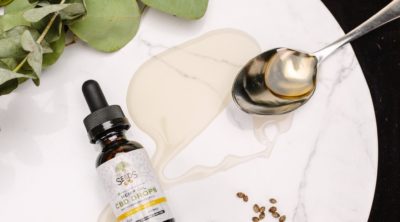Taking oral painkillers, applying anti-itch creams, and using herbal remedies like St. John's wort oil can help to cure shingles. To know more about shingles treatment, read on…
Shingles resulting from reactivation of chickenpox (varicella virus) virus causes the formation of rash that forms a band like pattern in the affected area. Usually, the stripe of rash stretches from the back to the chest area. It is observed that when chickenpox gets cured, the virus does not leave the body, but at the same time does not cause any harm and it remains in an active state in the nerve roots. Factors like suppressed immune system and stress can instigate the virus to strike again. However, this time, the virus doesn’t cause chickenpox, but a rash that remains restricted to a particular area of the body. The blistered rash is quite painful, terribly itchy, but clears away within 3 – 4 weeks. However, with shingles symptoms being very unpleasant, sufferers are often hunting for new home remedies to get some relief.
Home Remedies
Shingles treatment at home may not completely cure shingles, but can work wonders to relieve its painful symptoms. One does not have to really depend on those anti-viral medicines to tackle shingles symptoms. Following are some of the home remedies that can help to treat shingles.
NSAIDS
The use of over-the-counter (OTC) non-steroidal anti-inflammatory drugs (NSAIDS) can also benefit in alleviating pain associated with shingles. These painkillers are found to be extremely effective to manage shingles symptoms. OTC medications like ibuprofen and acetaminophen can certainly be helpful in the management of shingles. The swelling that accompanies shingles rash may also subside with the intake of these medications.
Anti Itch Creams
As the name suggests, anti-itch creams like aveeno lotion can also reduce the itchiness linked with shingles. The fast acting formula of these lotions provides immediate relief from skin irritation and inflammations.
Cold Therapy
Cold therapy, meaning putting ice packs on the site showing blisters, can also work wonders to reduce the itchy sensation of shingles. In case you are not comfortable with ice packs, placing a wet towel on the affected area, is a simple solution to get relief from shingles.
Alcohol
Take two aspirin tablets and crush them. The powder thus produced has to be combined with 2 tablespoons of alcohol. Application of this paste containing alcohol and aspirin on the painful site can also be helpful to ease the discomfort.
Oatmeal Bath
Instead of a normal hot water bath, go for an oatmeal bath, and one will definitely experience relief from shingles pain. It is one of the best ways to reduce the itching and inflammation of shingles rash. Simply soaking the body in the oatmeal water is an easy way to soothe the burning skin. Or else, one can simply make a paste by adding uncooked oatmeal to a small amount of water. The paste when applied to the blistered area, can certainly work to reduce the irritation.
St. John’s Wort Oil
Topical application of St. John’s wort oil on the area showing a band of blisters is extremely effective to control shingles pain. This is because St. John’s wort oil acts an excellent anti-viral agent, and on top of that, it also displays anti-inflammatory properties. So, application of St. John’s wort oil 2 – 3 times daily, nourishes the skin, but most importantly, relieves one of the pain.
Mint Leaves
A paste made from 2 – 3 mint leaves is found to be extremely effective in curbing shingles pain. Upon application on the rash, let it remain for 10 – 15 minutes and then wash it off.
Prescription Treatment
Taking antivirals is the recommended treatment for shingles. These medications are formulated to deactivate the virus. Therefore, taking these medications for the prescribed duration enables a patient to manage the symptoms effectively. Some of the prescription oral antiviral drugs that improve shingles symptoms are famciclovir, valacyclovir and acyclovir. Be sure to consult with you doctor before taking any medications.
In some patients, shingle pain doesn’t subside even after the rash has gone away. This is signaling that the virus has damaged the nerve fiber, and in such circumstances, the use of anti-seizure or tricyclic depressants may help to reduce the pain.


